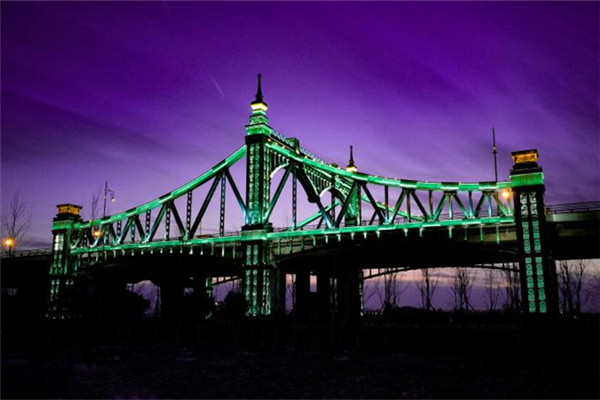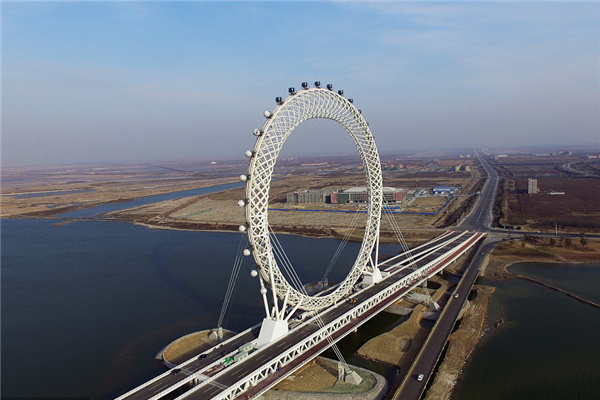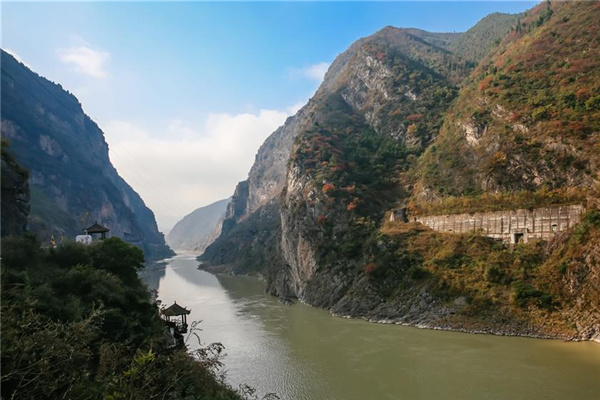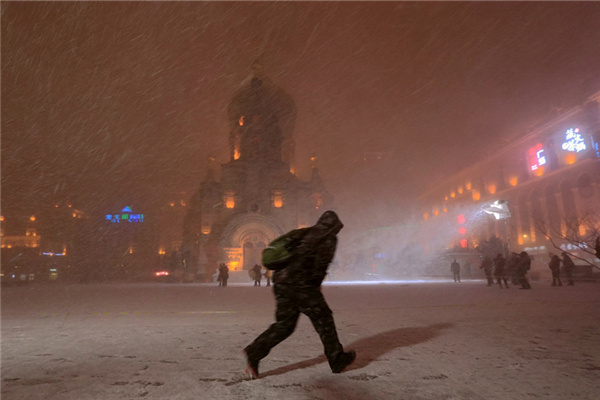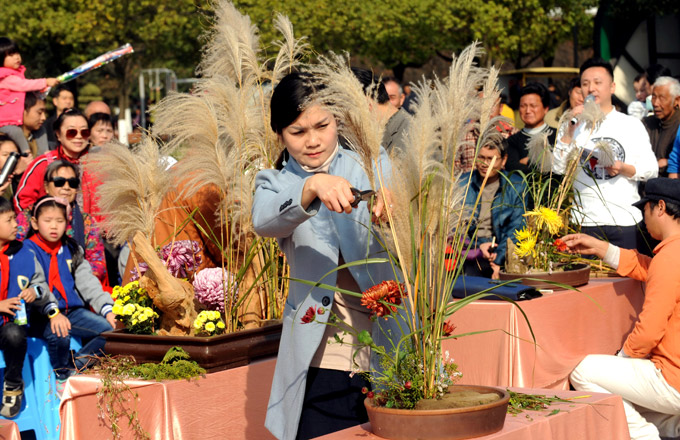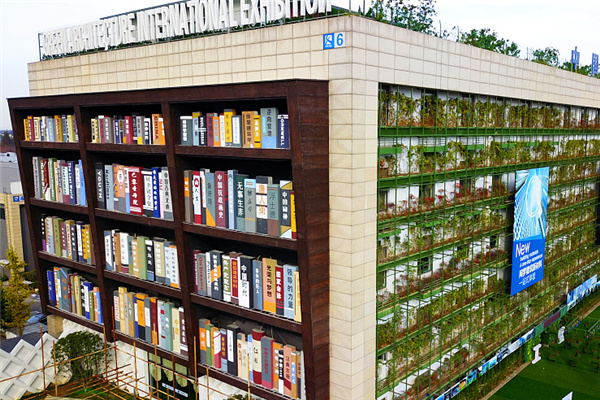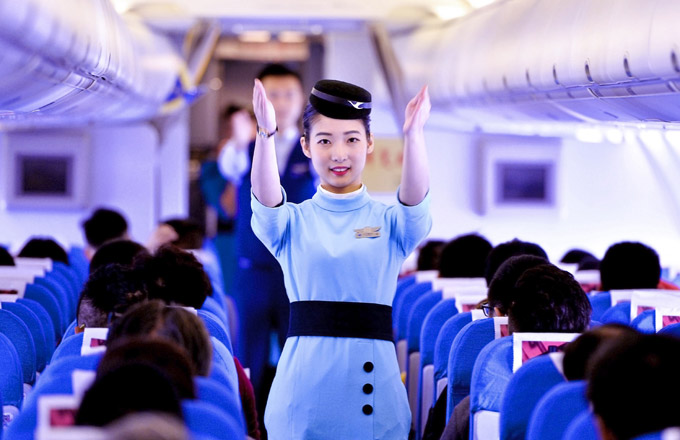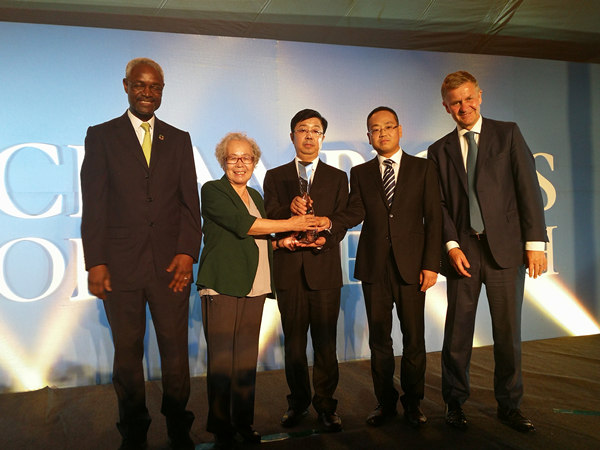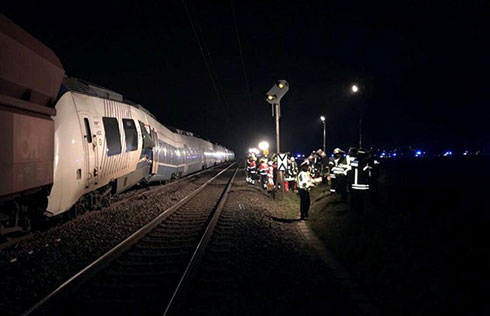

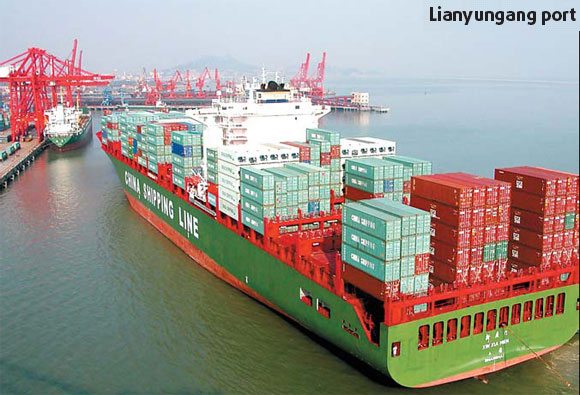
Cranes and forklifts are in high-speed operation at Lianyungang port. Bulldozers and pile drivers are pushing and pounding at the construction sites of the economic development zone while government officials and their staff work weekends in offices.
"I have been living in Lianyungang for nearly 30 years, but I've never seen the city making so many changes and so much progress as today," says Zhang Ling, a local magazine editor.
Situated along China's east coast, Lianyungang, a city in the northern part of Jiangsu province, has a history of more than 2,000 years of rich cultural heritage.
It also enjoys favorable geographic conditions as the eastern terminal of the New Eurasia Land Bridge, which aids its economic exchanges with foreign countries and regions, including South Korea and Japan.
When China implemented its opening-up and reform policy, Lianyungang was designated by the State Council as one of the first 14 coastal cities open to the outside world, which provided it with a rare opportunity for fast development.
However, Lianyungang initially failed to achieve its economic potential for various reasons, including a poor industrial foundation, an inadequate infrastructure and lack of professionals and sufficient funding.
"After about 20 years of stagnant development, we can not wait any longer and have to keep up with the momentum of development nationwide," says Wang Jianhua, secretary of Lianyungang committee of the Communist Party of China.
The city has witnessed enormous changes since 2005 when Wang, 56, came to head the government with the mission of building the city into the economic hub of north Jiangsu.
Policy and financial support from the provincial and central government has encouraged Wang and his people to rejuvenate the local economy and to help coordinate and promote the development of eastern, western and central China.
The first thing Wang and his team did was to lay out a development blueprint, including city, port and tourism planning.
"We were determined to achieve leap-forward progress because we were so far behind other cities in the province," says Wang.
The city government has made its port the propeller of its overall development.
Priority has been given to container and large cargo transit development in the main port area. At the same time, the north and south wings of the main port are designed to handle bulk and miscellaneous cargo in order to promote the development of the three counties around the city.
After four years, the port now ranks ninth in the country in terms of transportation capacity and cargo volume.
The container transportation volume of the port surpassed 85 million tons, making it a pivotal freight station for north Jiangsu cities and central and western China cities in 2007.
During the first quarter of this year, the port has already handled more than 25 million tons of commodities, an increase of 18 percent from the same period last year.
"We plan to have a 100-million-ton transportation capacity by the end of this year," says Wang.
The port's development has also attracted other industries to settle in the surrounding area.
A nearby industrial park with 50 sq km has already taken shape, where the petrochemical, iron and steel, automotive, marine and shipbuilding industries are developing fast with the help of the convenient transportation provided by the port.
City planning was high on the government agenda when Wang took the post in 2005.
He invited a team of Japanese city planners to give advice and his team members are all experts on new energy exploration and recycling systems in urban cities.
"We aim to build the city into a clean, charming and environmental-friendly coastal city," says Wang.
The final plan features "one center and three poles". "One center" means a new seashore city covering 58 sq km on the seaside wetlands that is under construction and will be completed in five to 10 years. "Three poles" refers to East district, Xinhai district and Ganyu district, planned as the central part of the city in the future.
To keep the promise of building a green city, the city government has laid out strict requirements for new businesses in the development zones.
With the Yuntai Mountain running through the city, wetlands and lakes scattered around the city, and the Yellow Sea on the east, Lianyungang enjoys a pleasant environment.
"Only by avoiding excessive consumption of energy and resources, can we maintain sustainable development with a clean ecological environment," says Wang.
The major industries of the city are new energy, new materials and new medicine.
A large production base for wind-power vanes was built in 2005 and it has an annual production capacity of 1,000 pieces now, ranking first in China. And the production of wind-power racks and generators are also in planning.
"We will produce 3,000 pieces of vanes a year by 2010 to become the largest producer in Asia," Wang says confidently.
A wind-power station is also under construction in the city, and expected to be in operation in 2009. Upon completion, it is expected to save 132,000 tons of coal and reduce 160,000 tons of pollutant emission a year.
"We are also trying to create products with our own intellectual property rights so that we can be more competitive and yield more revenue," says Wang.
The Lianyungang-based Yingyou (Group) Corp has broken the technological monopoly of overseas companies and built its own carbon fiber facility with an annual capacity of 220 tons.
The company's carbon fiber production accounts for half of the national output and is expected to reach 10,000 tons a year by 2010, the world's largest.
Their hard work and efforts have paid off. In three years, the city's comprehensive strength jumped from 72nd in 2004 to 39th in 2007 among 286 Chinese cities, according to the National Bureau of Statistics.
"Lianyungang is still a developing coastal city and we have to work even harder to catch up with the developed coastal cities like Shenzhen and Dalian," says Wang.
(China Daily 05/12/2008 page10)
